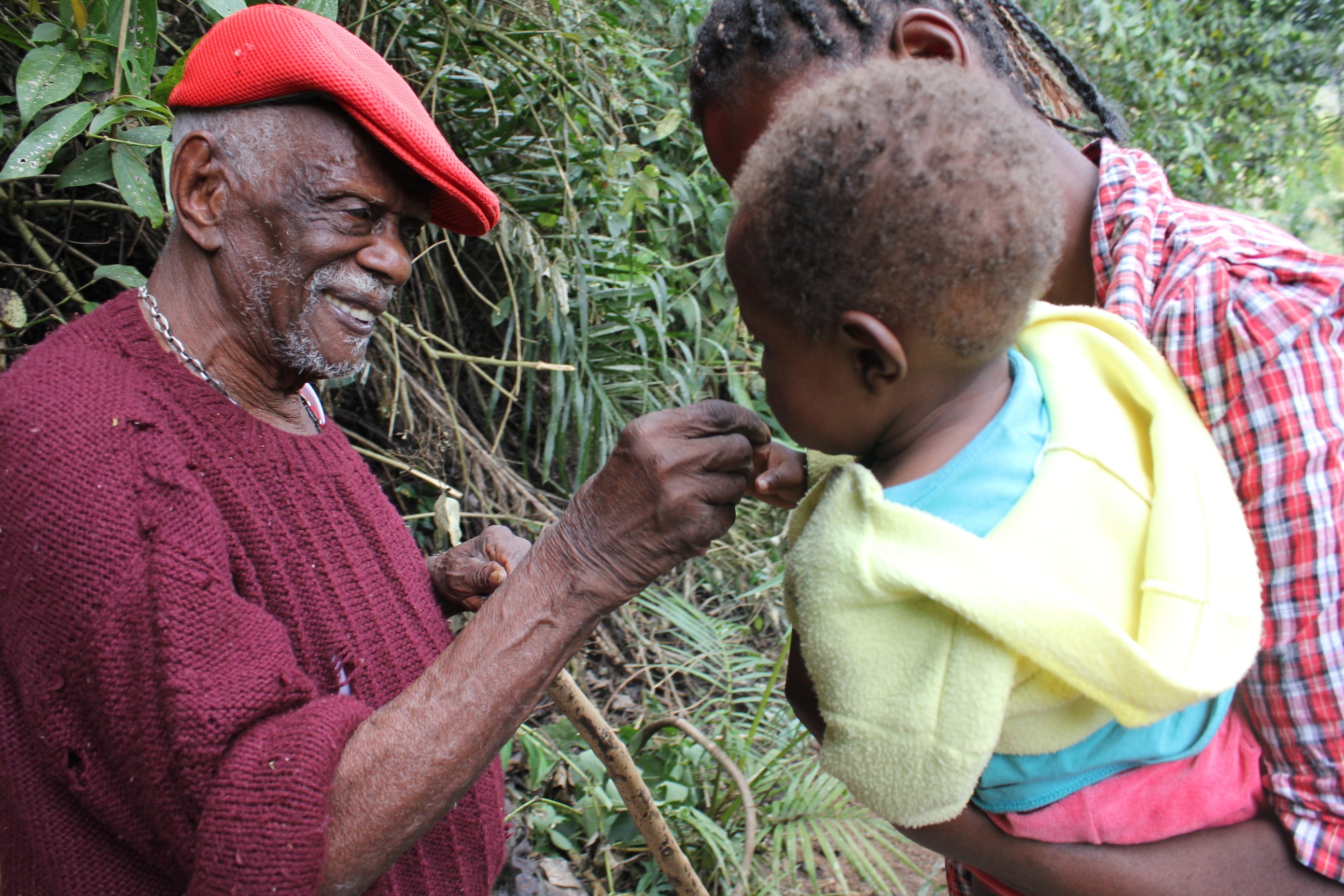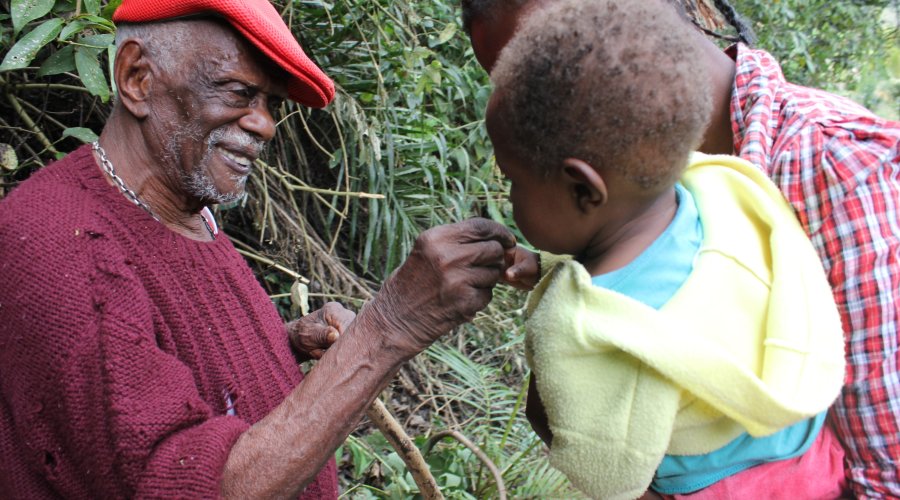The Southeast Route began on the morning of August 28th. We left Campinas and traveled 190 km to Taubaté where we met our partners Ivan, Paula and their son Samuel. We continued together, stopping at Ilê Axé Omò Aiye in São Luiz do Paraitinga, home to Ya Nadya and Mestre Lumumba. Our reunion was full of energy and memories, and we brought araucaria saplings and much axé with us.
We continued our journey, descending the mountain in the late afternoon and traveling 60 km more to arrive at night at our partners Ivan and Paula's house. They showed us all the sustainable technologies used to build their home, including solar panels, adobe walls, wooden beams, green roofing and other technologies that reduce costs and environmental damage.
We spent the night there and the next day traveled a few kilometers towards Quilombo da Fazenda da Caixa. There we visited the community telecenter where Rede Mocambos had conducted activities around 2007, and where we connected via the Gesac antenna to communicate with our team and the community leaders we met later. We then walked to the Flour Mill, where we met Seu Zé Pedro who had many stories to share. The mill was founded in the 19th century using slave labor to produce alcohol and sugar, but today produces flour. Zé Pedro told me the Black workers there had been brought from different African countries - his grandfather came from Angola. That day we left him a baobab sapling whose seed came from Mozambique and was planted at Tainã, as well as one of the araucaria saplings given by Mestre Lumumba to be planted by Zé Pedro and the quilombolas. We took with us one kilo of flour produced there and some honey preserves. Seu Zé Pedro also gifted us his book: "I Have My Dream".
We continued along BR-101 highway, which provides access to several coastal quilombos from Ubatuba to Paraty. When built, this highway divided many quilombos in half, including Fazenda da Caixa. So we crossed the highway to access the other part of the quilombo located within a forest reserve, where we met Laura, a great partner and community leader, and extended an invitation for quilombolas to join and strengthen the Baobab Route.
We walked about 70 km towards Quilombo do Campinho, arriving at night and being welcomed by Fabinho and his family, especially his mother Dona Dalva who received us with great affection. At Campinho Quilombo we held a discussion circle about structural issues for the community and movement. We conducted two workshops involving about 10 children who learned and performed computer maintenance and free software installation on the telecenter computers.
On August 31st, Mestre TC returned to Fazenda da Caixa to pick up Cristiano, a young student from the quilombo and son of Dona Laura who volunteered to join the route. Our group now included Fabinho from Campinho (a filmmaker), Drebis (a programmer who had arrived from São Paulo), Cristiano, myself (Layla) and Mestre TC.
That same day we left Campinho and traveled about 174 km to Pinheiral, passing by Quilombo de Bracui where there was a gathering by the Cachoeira river. We met some partners, exchanged ideas and continued on. Arriving in Pinheiral, we met Fatinha, a great woman and reference in Pinheiral's jongo tradition. We had lunch together and she guided us 70 km more to Quilombo São José da Serra.
This quilombo is a great reference of tradition, resistance and culture. Recently, after much struggle, the quilombolas regained possession of the manor house located within their territory that had belonged to a landowner. I was amazed to see how much the children respect and intensely live their traditions, from asking elders for blessings to playing, dancing jongo and feeling the drum's energy.

Our exchange with them was very rich and productive. We also conducted workshops on assembly, maintenance and free software installation for the quilombo's telecenter computers, while discussing the importance of producing our own content and memories, and the symbolism of free digital territory. We left a baobab sapling there, and just as I saw that baobab sprout, I saw smiles, strength and ideas sprout. That night, using the projector we left them, we held the first exhibition of photos also taken by the quilombo's children. Afterwards, we held a beautiful jongo circle around the fire to say goodbye.
The next morning, September 2nd, we returned with corn seeds, beans and cassava cuttings from the quilombo and headed back to Pinheiral to drop off our companion Fatinha, who showed us the ruins of a manor house from a coffee empire that belonged to one of Brazil's largest slave owners, who continued practicing slave trade for many years after abolition. Historians say he had over 6,000 enslaved people on his property.
That same day, we returned to Quilombo do Campinho where we conducted more activities similar to those at São José da Serra, involving children and technological appropriation. From Campinho Quilombo, we brought and left several saplings including cacao and jussara palm. On our way back we passed through São Luiz do Paraitinga again and São Paulo to drop off our companion Drebis. We arrived back in Campinas in the early morning of September 5th.
Our mission was accomplished and built with everyone's participation. Together we planted and built another part of the process, exchanging seeds, saplings, ideas, thoughts and actions. We grew stronger as individuals fighting for freedom, autonomy and the existence of our people's culture, memory and traditions.
The Baobab Route is also the Barter Route, the Exchange Route, the Route of Cultural, Ancestral, Affective and Technological Strengthening.

